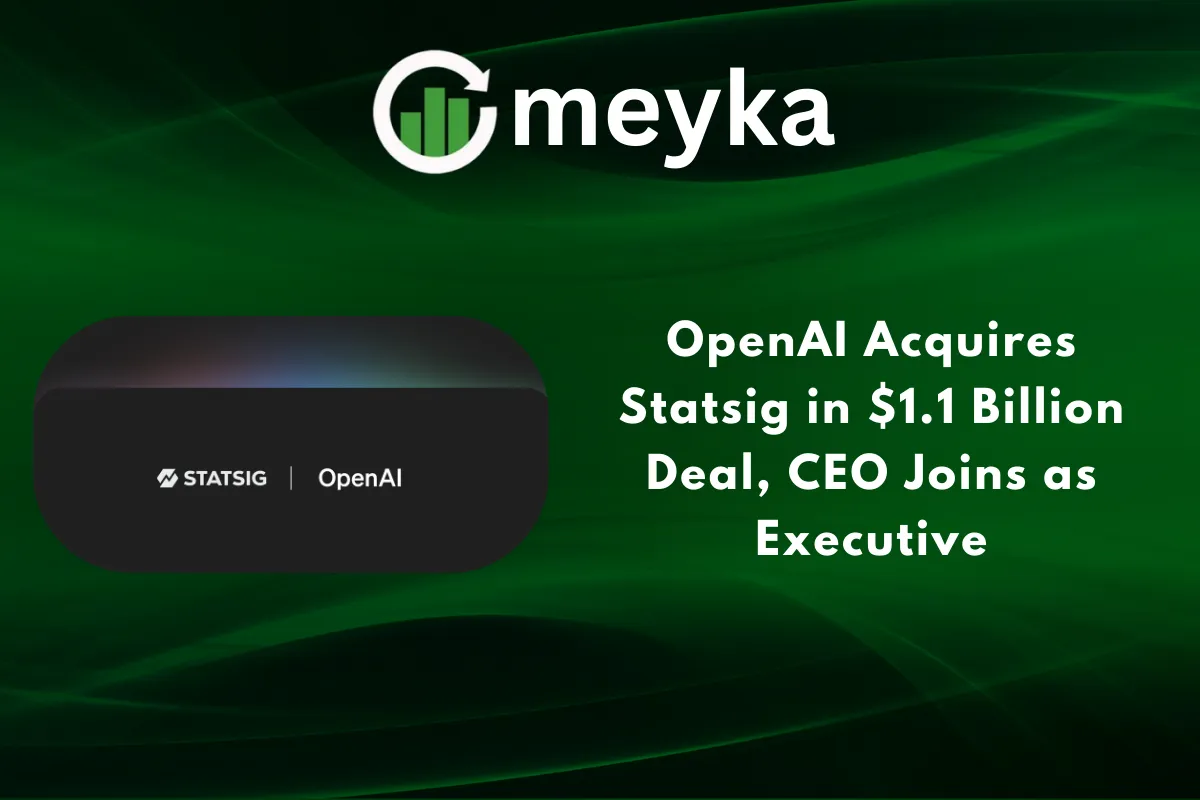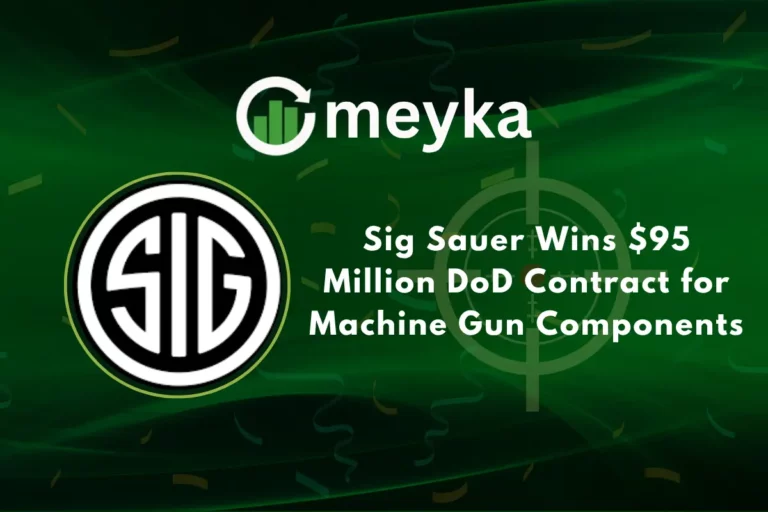OpenAI Acquires Statsig in $1.1 Billion Deal, CEO Joins as Executive
OpenAI completed its acquisition of Statsig for $1.1 billion in an all-stock transaction announced Tuesday morning. The deal brings Seattle-based product testing platform Statsig into OpenAI’s expanding portfolio. This acquisition signals OpenAI’s commitment to strengthening its product development capabilities amid intense competition in the AI sector.
The acquisition includes appointing Statsig founder and CEO Vijaye Raji as OpenAI’s CTO of Applications. Raji will oversee product engineering for ChatGPT and other consumer-facing applications. This move reflects OpenAI’s strategy to integrate proven leadership while expanding its technical expertise in the rapidly evolving stock market landscape.
Statsig provides A/B testing and feature flagging services that help companies optimize their products through data-driven decisions. The platform has already been powering OpenAI’s internal product experiments and development processes. This existing relationship made the acquisition a natural progression for both companies.

Strategic Implications of the Statsig Acquisition
Leadership Transition and Executive Restructuring
Vijaye Raji brings extensive experience from his decade at Meta, where he held consumer engineering leadership roles before founding Statsig. His appointment as CTO of Applications creates a newly established position within OpenAI’s organizational structure. Raji will report directly to Fidji Simo, who joined OpenAI in May as CEO of the applications business.
The leadership changes demonstrate OpenAI’s focus on scaling its consumer applications. Raji will manage core systems, infrastructure, and integrity functions across OpenAI’s product portfolio. His responsibilities include overseeing ChatGPT’s technical development and ensuring product reliability at scale.
Market Position and Competitive Advantage
The $1.1 billion acquisition represents one of OpenAI’s largest deals to date, conducted under the company’s current $300 billion valuation. This transaction showcases OpenAI’s financial strength in the competitive AI market. The deal positions OpenAI to better compete against rivals like Google, Microsoft, and emerging AI companies.
Statsig’s technology platform enables real-time product optimization through advanced testing methodologies. The acquisition gives OpenAI enhanced capabilities to iterate quickly on product features. This technical advantage becomes crucial as the stock market increasingly values AI companies based on their product innovation speed.
Technical Integration and Platform Capabilities
Product Development Enhancement
Statsig provides A/B testing, feature flagging, and real-time decisioning services that have been used internally by OpenAI for product experimentation. The platform’s integration will streamline OpenAI’s product development cycles. This efficiency gain translates to faster feature releases and improved user experiences across OpenAI’s applications.
The technical integration extends beyond basic testing capabilities. Statsig offers sophisticated analytics that help teams understand user behavior patterns. OpenAI can leverage these insights to optimize ChatGPT’s interface and functionality based on real user data.
Operational Independence and Customer Continuity
Statsig will continue operating independently and serving its customers from its Seattle office. This approach maintains existing customer relationships while allowing gradual integration with OpenAI’s systems. The independent operation model protects Statsig’s current revenue streams and market position.
The operational structure ensures minimal disruption to Statsig’s existing client base. Companies currently using the platform can continue their testing workflows without interruption. This stability preserves the platform’s market value while OpenAI develops integration strategies.
Financial Market Impact and Investor Considerations
Valuation Methodology and Deal Structure
The all-stock transaction structure reflects current market conditions where companies prefer equity-based acquisitions. This approach conserves cash while aligning the acquired company’s interests with OpenAI’s long-term growth. The deal structure indicates confidence in OpenAI’s continued valuation growth in the stock market.
The $1.1 billion valuation represents significant value creation for Statsig investors and employees. The premium reflects both the strategic value of the platform and the talent acquisition aspect. Market analysts view this pricing as competitive given the current AI market dynamics.
Growth Strategy and Market Expansion
The acquisition forms part of OpenAI’s broader strategy to fuel growth through strategic acquisitions and talent recruitment. The company has pursued similar deals including partnerships with hardware design teams and other technology companies. This pattern suggests a comprehensive approach to building market leadership.
Statsig brings proven expertise in product optimization that complements OpenAI’s AI capabilities. The combination creates synergies that benefit both consumer applications and enterprise solutions. These synergies position OpenAI for expanded market share across multiple segments.
Industry Context and Competitive Landscape
AI Market Consolidation Trends
The acquisition reflects broader consolidation trends in the AI industry. Large companies are acquiring specialized platforms to build comprehensive technology stacks. This trend mirrors historical patterns in other technology sectors where market leaders consolidated capabilities.
Statsig represents the type of specialized technology that becomes increasingly valuable as AI applications mature. The platform’s testing capabilities become essential for companies deploying AI at scale. OpenAI’s acquisition secures these capabilities while preventing competitors from accessing them.
Product Development Evolution
Modern AI applications require sophisticated testing and optimization frameworks. Statsig provides the infrastructure needed to manage complex product experiments across diverse user bases. This capability becomes critical as AI applications serve millions of users with varying needs and preferences.
The integration enables OpenAI to implement more sophisticated personalization features. Users may experience more tailored AI interactions based on testing insights. This improvement could drive higher engagement and retention rates across OpenAI’s applications.
Future Outlook and Strategic Implications
Technology Integration Roadmap
The technical integration process will likely unfold over several quarters as teams align development processes. Statsig technology will gradually enhance OpenAI’s existing testing infrastructure. Users should expect improved product experiences as these capabilities become fully integrated.
The integration may introduce new features that leverage combined AI and testing technologies. These innovations could create new product categories that merge artificial intelligence with advanced optimization techniques. Such developments would strengthen OpenAI’s market position significantly.
Stock Market and Investment Implications
The acquisition demonstrates OpenAI’s commitment to maintaining market leadership through strategic investments. Investors view such moves as positive indicators of management’s long-term vision. The stock market typically rewards companies that successfully integrate acquisitions into their core business operations.
Statsig acquisition costs will impact OpenAI’s financial metrics in the near term. However, the strategic benefits should generate positive returns through improved product performance and market share gains. This balance between short-term costs and long-term benefits characterizes successful technology acquisitions.
Disclaimer:
This is for informational purposes only and does not constitute financial advice. Always do your research.






